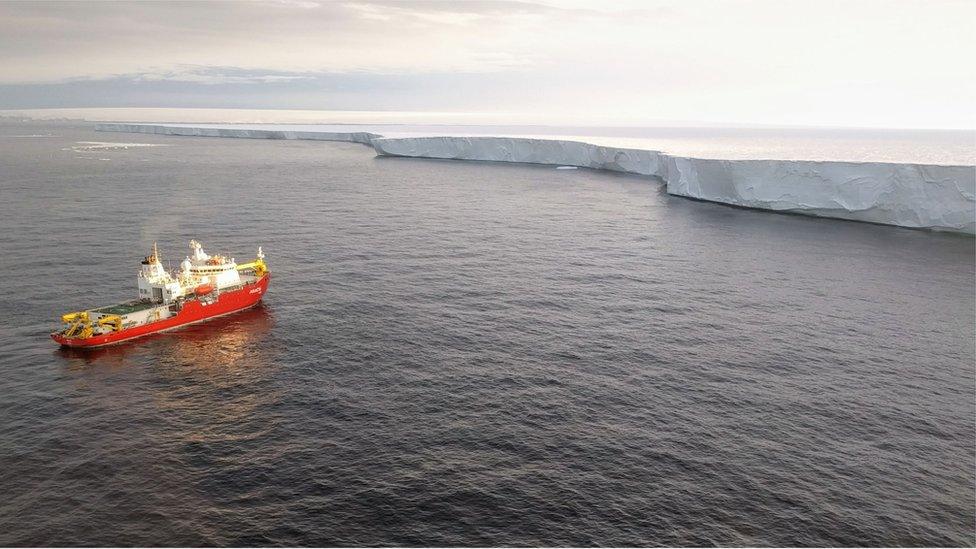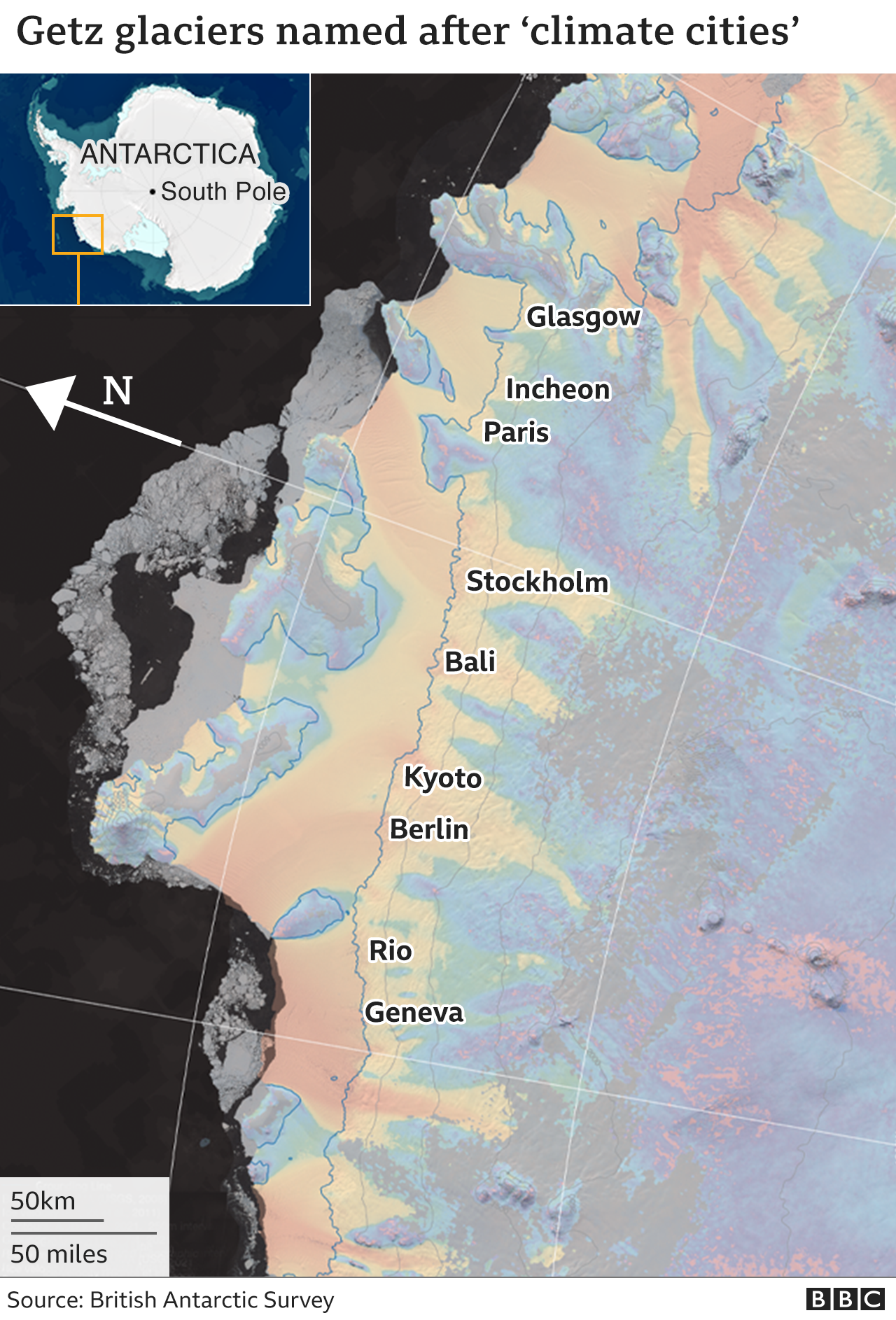COP26: Antarctic glacier is named in honour of Glasgow
- Published

The glaciers' floating fronts join to form a single, continuous platform, known as the Getz Ice Shelf
A previously unnamed glacier in West Antarctica is to be called Glasgow Glacier to mark the Scottish city's hosting of the COP26 climate meeting.
The 100km-long ice stream is in a region of the White Continent known to be experiencing rapid melting.
Eight other nearby glaciers will also carry the names of cities where important climate reports were issued, or policies were agreed.
They include Geneva, which held the very first climate conference in 1979.
But anyone who's followed the meandering road of international climate diplomacy down the years will recognise, too, the significance of Rio, Berlin, Kyoto, Bali, Stockholm, Paris and Incheon (see their history below).

The scientists who proposed the names said they wanted the glaciers to be a symbol of what was at stake in Glasgow over the next couple of weeks.
"We know that if we continue on the current emissions path, we're heading for 2.7 degrees of warming (by the end of the century) and the consequences this will have for the intensity and regularity of events such as droughts, floods, cyclones, and issues with crop yields, etc," said Heather Selley, who monitors the glaciers using satellite imagery.
"It's now up to us to decide whether this is the point where humans step up and try to address climate change, or whether it represents a downward spiral with continuing reliance on fossil fuels and the pumping of greenhouse gases into the atmosphere," the Leeds University and Alan Turing Institute researcher told BBC News.

Artwork: Ms Selley uses the European Union's Sentinel-1 satellite system to monitor glaciers
Ms Selley's team reported in February, external how the glaciers entering the ocean along the Getz coast in West Antarctica were being thinned and accelerated on encountering relatively warm seawater.
Using the satellite data, the researchers calculated the area as a whole had lost some 315 billion tonnes of ice over the past 25 years - the equivalent of 126 million Olympic swimming pools of water.
This would have raised the global ocean surface by 0.9mm over the period. That might not sound much but this contribution was from just one, 600km-wide region of coastal Antarctica. Other locations in the west of the White Continent are melting a lot faster.
The new names for the Getz glaciers follow a chronological order, starting in the west with Geneva and ending with Glasgow in the east. This direction is also marked by a progressive increase in the heat content of the local ocean water.
"The order reflects the warming climate we saw as the events in these cities happened," explained Ms Selley.

Glasgow Glacier
It's 104km (63 miles) in length, which is roughly 4/5ths the length of Hadrian's Wall
Its area is 2,630 sq km (1,630 sq miles) or 15 times the size of the Scottish city itself

The new glacier names were submitted by the Foreign, Commonwealth & Development Office on behalf of the UK government and supported by the UK Antarctic Place-names Committee. The names will now be added to the international Composite Gazetteer for Antarctica, for use on maps, charts and future publications.
Antarctica is so vast, many places still carry no formal name, only latitude and longitude coordinates.
The nine newly named glaciers
Geneva is named after the world's first climate conference in 1979. It set up the body that reviews the science - the Intergovernmental Panel on Climate Change (IPCC)
Rio commemorates the first Earth Summit in 1992 where the United Nations Framework Convention on Climate Change (UNFCCC) was opened for signatures
Berlin is named after the first Conference of Parties (COP) in 1995 which assessed the progress of dealing with climate change
Kyoto commemorates the formal adoption in 1997 of the protocol that legally bound developed countries to emissions reduction targets
Bali marks the release of the IPCC fourth assessment report (AR4) in 2007. Around this time, climate science began to enter the popular consciousness
Stockholm honours the IPCC fifth assessment report (AR5) approval session in 2014. This report represented the biggest ever coming together of scientists at the time.
Paris memorialises the agreement of a legally binding treaty in 2015 that aimed to limit global temperature rise to well below 2C, preferably below 1.5C
Incheon marks the meeting of the IPCC in 2018 to consider the special report on the impacts of 1.5 degrees of warming and the difference in risks of going to 2C
Glasgow hosts the 26th UN Climate Change Conference of Parties (COP26). Its aim is to embed strong policies to realise the goals set out in Paris six years ago


